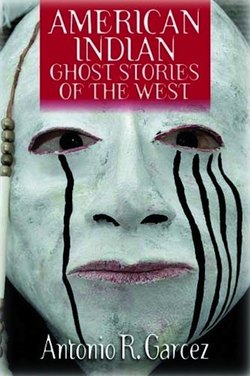Читать книгу American Indian Ghost Stories of the West - Antonio Sr. Garcez - Страница 9
На сайте Литреса книга снята с продажи.
Colorado River Indians
ОглавлениеThe Chemehuevi (Nu Wu)
The Chemihuevi name is derived from a Mohave word that relates to fish. However, the Chemihuevi prefer to distinguish themselves as “Nu Wu” or “people,” using their own language when referring to each other.
The Nu Wu are closely related to the Southern Paiute of southern Nevada. Historically, they were nomadic people who were hunters and gatherers. Linguistically, their dialect is very similar to the Ute (Kaquiisi) and the Paiute.
Originally, the Nu Wu lived in the area between southern Nevada and Yuma, Arizona, in small family groups. Ancient human habitation is very evident from the numerous petroglyphs (rock carvings), and ancient trails and pictographs (picture writings) that have been discovered in the area. The Colorado River Indian Reservation, created by an act of Congress in 1865, was originally created for just the Nu Wu and Mohave, and was located on their ancestral homeland. But in 1945, the U.S. Government relocated members of the Hopi and Navajo from their traditional lands onto this reservation.
The reservation consists of 278,000 acres of land in the states of Arizona and California. The Colorado River runs directly through the reservation. The almost perfect weather year-round and the rich fertile river-bottom land make farming one of the major industries on the reservation. It is unique in the sense that is occupied by four distinct tribal groups—Mohave, Nu Wu, Hopi and Navajo, each group with its own separate culture and traditions. As of today, the four tribes that make up the Colorado River Indian Tribes respectively continue to promote and maintain their individual and unique traditional ways, and when necessary, come together and function as one political unit.
Within the reservation is the town of Parker, and next to this is found the Colorado Indian Tribes Museum. The museum displays artifacts, cultural items and artwork of the four nations of Nu Wu, Mohave, Hopi and Navajo. Fame is given to the Nu Wu’s highly developed skill of beadwork and basket weaving. Nu Wu baskets are among the finest in the Southwest, and are exquisitely woven using willow, devil’s claw and juncus. Sadly, these baskets are becoming more and more difficult to obtain, due to being fewer weavers who practice the art.
Memorial Tribute:
“To all men and women who honorably served in the United States armed forces in defense of the nation and its people, particularly to those Americans of Japanese ancestry, who, during World War II, fought so valiantly for their country while their parents and families were being interned in the Poston war relocation center without due process of law. And to those brave young men who gave their lives in service to their country.”
During World War II, the United States was in conflict with Japan. The federal government built several Japanese internment camps on reservations throughout the southwest, purportedly for national security reasons. The Colorado River Tribes area was designated as one of these sites. This historic development brought changes to the reservation. As roads were constructed, land was cleared and innovative agricultural experiments were tested. The results of these experiments successfully raised the economy of the area.
Beginning in May and ending in August 1942, 17,876 Japanese evacuees from the pacific coast states and Arizona arrived to the reservation. Most of the evacuees were from California. The extreme, relentless desert sun scorched the earth, and the frequent winds whipped the sands into blinding dust storms. In winter, chilling winds easily penetrated the walls and wide floor cracks of the flimsily built tarpaper barracks. Adding to the hardships of internment, infrequent but torrential rains would quickly turn the parched dirt walkways and roads into slippery treacherous and muddy quagmires. Amidst the trauma of forced evacuation and the indignities of internment, Japanese children were the first to adapt to the routine of camp life. They found numerous playmates, but they lacked toys and other playthings. Creative parents, relatives and friends relied on their imagination to make playthings from scrap lumber, rocks, trees branches, shells and other available materials for the children.
